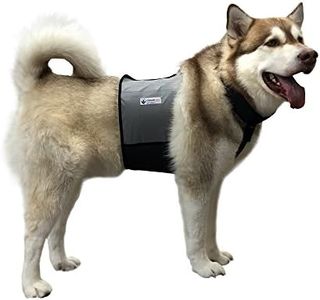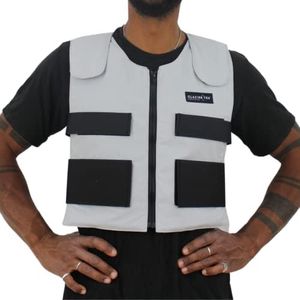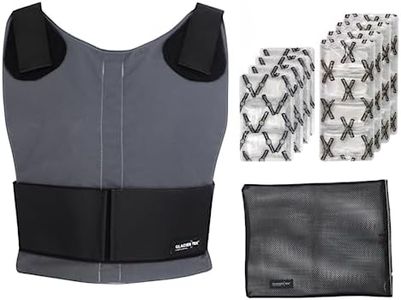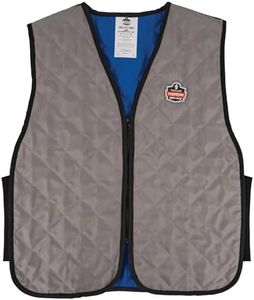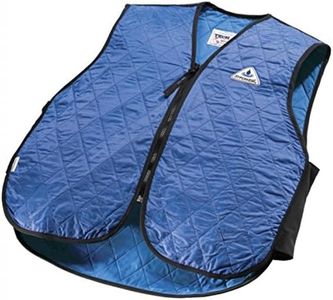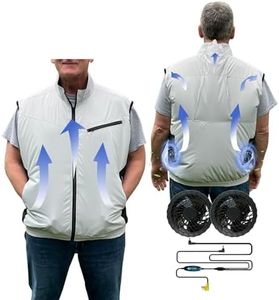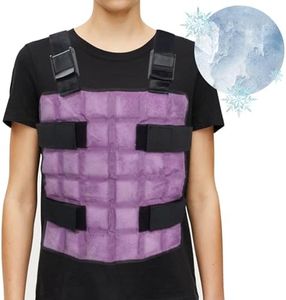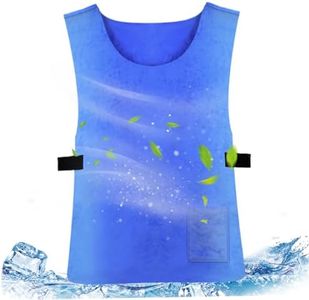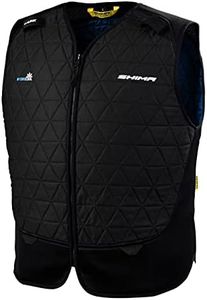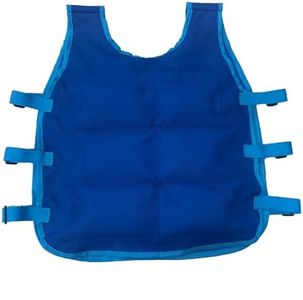We Use CookiesWe use cookies to enhance the security, performance,
functionality and for analytical and promotional activities. By continuing to browse this site you
are agreeing to our privacy policy
10 Best Cooling Vests
From leading brands and best sellers available on the web.Buying Guide for the Best Cooling Vests
Choosing the right cooling vest can be a real game-changer for comfort and performance when you’re active in hot environments, whether it’s for sports, work, or medical reasons. The main goal is to efficiently regulate your body temperature and prevent overheating. With so many types of cooling vests out there, it’s important to understand what features matter most so you end up with a product that actually meets your specific needs.Cooling TechnologyCooling vests rely on different technologies such as evaporative, phase change, or ice pack/gel insert systems to keep you cool. Evaporative vests work by soaking them in water and letting the evaporation cool your body, which is best for dry climates but less effective in humidity. Phase change vests use inserts that maintain a consistent cool temperature for a set period and don’t get as cold as ice, so they’re more comfortable for longer duration tasks. Ice pack/gel insert vests can get colder but might feel too intense for some and typically last for a couple of hours. Decide which technology fits your climate and how long you need cooling; for quick bursts in extreme heat, ice-based may work best, while for longer, moderate cooling, phase change or evaporative may be best.
Duration of EffectivenessThis refers to how long the vest can provide cooling before it needs to be reactivated with water, swapped inserts, or refrozen packs. Some vests last only an hour or two, while others can work for up to eight hours. If your activities or work involve being outside for extended periods, choosing a vest with a longer cooling duration or extra replacement inserts can be helpful, while for short intervals, a simple quick-cooling option will do.
Weight and ComfortThe weight of a cooling vest often depends on the type of cooling elements it uses, such as ice packs or gel inserts, and how much coverage it offers. Lighter vests are generally easier to wear for longer periods, particularly for sports or active jobs, while heavier vests with more cooling materials provide better cooling but can feel bulky. Consider how much freedom of movement you need and how long you’ll be wearing the vest, then pick one that balances cooling power with comfort for your typical activities.
Fit and AdjustabilityFit is crucial because a cooling vest works best when it sits close to your body, but it shouldn’t restrict your movement or feel uncomfortable. Look for options with adjustable straps, hook-and-loop fasteners, or flexible sizing so you can get a snug, personalized fit. If you’re wearing it over or under other clothing, consider how layering might change your ideal size and check if the vest allows for easy adjustment.
Ease of Recharge or MaintenanceDepending on the type, some vests require regular re-soaking, removing packs for freezing, or recharging in special ways. Consider how easy it will be to refresh your vest during a long work shift or outdoor event. If convenience is important, choose a vest that can be quickly recharged or easily swapped out for spare elements, and look for materials that are easy to clean and dry after use.
Coverage AreaSome vests target just the core torso, while others offer more coverage around the shoulders, back, or chest. Greater coverage can improve how effectively the vest cools you, but can also increase weight and bulk. Think about which parts of your body feel hottest or where you sweat most, and choose a vest that covers your personal hotspots without causing discomfort.

